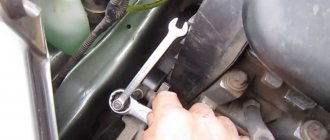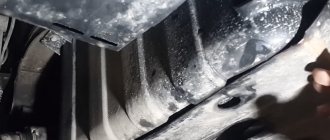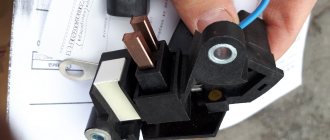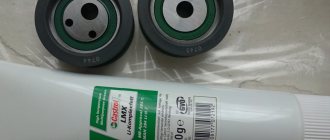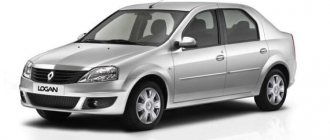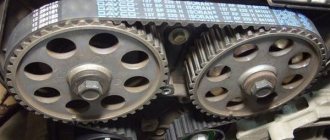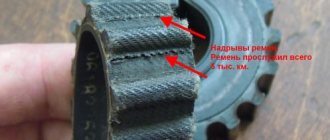The role played by a car generator cannot be overestimated. This important unit ensures not only the efficient operation of the car’s electrical wiring, lighting fixtures and other consumers of electrical energy when the car’s engine is turned on. The operation of the car’s ignition system directly depends on it, as well as such a useful function as recharging the battery while the engine is running. Therefore, it is very important that the car generator works properly and uninterruptedly.
However, like any other complex technical unit, it requires careful prevention and meticulous self-care.
Typical generator failures
A car generator is a rather complex device, including various parts, components and mechanisms. But if we talk about breakdowns of this unit, they happen mainly not with internal, but with external parts and components.
One of the most common malfunctions in the operation of a car generator is usually considered to be damage to the drive belt. Moreover, the weakest point is not the circuit itself, which has a fairly large margin of safety, but the generator belt tensioner roller, which needs replacement over time.
It would seem like a very insignificant detail, which is also very inexpensive (the cost of tension rollers will be discussed below), but what a great significance it has! This article will discuss whether it is possible to replace the generator belt tensioner roller with your own hands and how to correctly carry out this procedure.
Quality guarantee from professionals
Our service center specialists provide a full package of warranties for all types of repair work issued as part of the order. We undertake to promptly eliminate defects free of charge if they are detected or manifested.
All controversial issues are resolved through negotiations before the start of work on the merits.
Replacing the idler pulley and tensioner pulley with your own hands on a VW Polo sedan.
Are the rollers noisy? It's time to change. We will tell you how to replace the rollers yourself. A common cause of roller noise is lack of lubrication and play. So as not to repeat ourselves. How to loosen the accessory drive belt. Let's look here.
Drive of auxiliary units of a car with air conditioning: 1 – auxiliary drive pulley; 2 – coolant pump pulley; 3 – support roller; 4 – tension roller; 5 – generator pulley; 6 – air conditioning compressor pulley
So. The belt was removed. We twisted and shook the rollers from side to side. (see photo one). There is play and noise. We change.
Remove the deflection roller VAG 1J0145276B. Correct thread. Unscrew it counterclockwise using a 16mm wrench.
It happens that when unscrewing a bolt, the roller rests against the spar and it is impossible to remove it. In this case, use pliers to unscrew the barrel behind the roller.
To remove the tensioner pulley VAG 03C145299C, unscrew the bolt clockwise with a 16mm wrench.
When replacing the tensioner assembly with the roller. The tensioner mounting bolt is located behind the generator. You need to use a 16mm socket with an extension.
The autopsy showed. Almost complete absence and dried out lubricant. Large play in the tensioner pulley. Install the rollers in reverse order.
Types of parts
Today, the generator belt tensioner roller can be of two types:
- Eccentric. That is, a roller with a shifted center of gravity.
- Special movable bracket. The tensioner roller is mounted on it.
It is necessary to understand that parts intended for makes and models of cars from different manufacturers may have their own design features. That is, the Lacetti generator belt tensioner pulley is unlikely to work correctly on an Opel car or any other.
Replacing a part yourself
Despite the importance of stable and trouble-free operation of a car generator, the complexity of the device and the need for precise adjustment of all components and parts, in order to replace the generator belt tensioner roller, you do not need to be an expert in the field of knowledge about the structure of the car. With some skill, the car owner himself can perform such an operation, without turning to specialists from a car service center or service station. How exactly to do this?
When does it become necessary to replace the tension roller? The main component of the tension roller, which is often called the “Lenix”, is a regular bearing. When in good condition, the Lenix rotates easily and absolutely silently. But when the bearing fails or wears out, the tension roller begins to make a very characteristic noise. This leads to a very obvious conclusion. If the generator belt tensioner pulley whistles, it needs immediate replacement!
Diagnostics of the drive belt tensioner
The drive belt tensioner must be checked for serviceability when at least one of the above symptoms appears. Other structural elements also need diagnostics. Diagnostics is performed in several stages:
- It is necessary to visually familiarize yourself with the belt and the equipment driven by it. To do this, start the power plant and check whether there are vibrations of the belt, pulley or roller.
- Check the tension of the alternator belt. To do this, stop the engine. Next, on the largest span between the pulleys, take the belt and try to turn it clockwise. If you can turn it 90 degrees, then its tension is fine. Otherwise, the rotation angle will be smaller or larger, and then adjustment will be required.
- The next step is to remove the belt and check its condition. It is also necessary to check the pulleys and rollers for play. Removing the belt is quite simple. To do this, you must loosen the tension pulley nut. After this, it must be removed from the pulleys. Before doing this, remember the position of the belt between the pulleys, because you will then have to put it back on. It is recommended to take a photo of the position with a mobile phone camera. After removal, check that there are no cracks or peeling on the belt. Belt wear should be even. If any of these defects are detected, feel free to change the belt. Note wear on one side. When such wear occurs, the roller mounting stud or bracket becomes bent, causing misalignment. If this misalignment is not corrected, the belt will not last long.
- The play on the pulleys is checked. Rotate the roller and make sure that there are no jams or jams. If they are present, there will be severe wear of the bearing, and the generator belt tension roller will need to be replaced. Also carefully inspect the working surface of the plastic pad: there should be no grooves on it. If the surface is uneven, the drive belt tension roller must be replaced.
- If after replacing the belt the hum and squeaking does not disappear, then the problem must be looked for in other elements. The drive of these elements occurs due to belt tension.
Typical malfunctions of the alternator belt tension roller
Since its basis is the bearing, most of the malfunctions of this part are associated with it. The most common malfunctions of the bearing that is part of the belt tension roller are the following:
- wear that causes backlash and gaps when the part rotates;
- destruction of individual bearing parts, causing jerking during operation;
- corrosion or destruction of the cage, balls or rollers, which leads to complete failure of the roller.
In any case, it is necessary to remember that if this element begins to make extraneous sounds (usually a whistle), then postponing the replacement of the part for a long time is not easy, unacceptable, but even dangerous!
Generator tension pulley cost
The price of a tension roller depends on several components. The main ones are the following:
- Material of manufacture. The element can be made of metal, high-strength plastic, or composite materials. In any case, it includes a metal bearing group.
- Car make and model. As you know, the same part can differ significantly in price, in accordance with the prestige of the car.
- Design features. The more complex the design, the more expensive the generator belt tensioner roller.
Nevertheless, you can name the average cost of this part without much difficulty. For most regions of the Russian Federation, a generator belt tensioner pulley, the price of which ranges from 200-300 rubles (for bracket structures) to 700-800 (for eccentrics), is not a serious problem in terms of its acquisition. As you can easily see, tension rollers are relatively inexpensive.
Design features of the generator drive
To ensure proper transmission, the alternator drive belt must be tensioned. If it sag, the belt will slip on the pulleys, and if it is overtightened, this will increase the wear rate of the bearings, generator, working surfaces of the pulley and the belt itself.
Therefore, the belt tension adjustment is designed. Previously, on cars, only one generator was driven from the crankshaft pulley, so the tension was adjusted by the generator itself.
These cars had two mounting points for the generator. This element could rotate relative to one of them, and the second point was an adjustment point. To tighten the belt, it was enough to loosen the nut of the adjusting mounting point and pull the generator away from the engine, and then tighten the nut. This ability to adjust the tension is possible due to the fact that the crankshaft is driven only by the generator and the shape of the belt position is not complex in configuration; it is located only between two pulleys.
One of the generator drive circuits
On more modern cars, a number of additional attachments have been added, which are also driven by the crankshaft pulley. Such equipment includes the power steering pump and air conditioning compressor. And since the drive of these two units, as well as the generator, is carried out by one belt, it will not be possible to adjust the tension of the drive element using the generator. The configuration of the belt position on such cars is very complex, since the belt runs along four pulleys, while the equipment that it drives is located at different levels in relation to each other.
Video: Tensioner for Lada Granta generator belt
Step-by-step algorithm for replacing the tension roller
Of course, before you start replacing this part, you need to open the hood to gain access to the engine compartment of the car. Obviously, the generator belt tensioner pulley (Priora VAZ included) in a car of any other brand is located on the engine, on its front side. After which it will be necessary to carry out the following procedure and measures:
- Secure the crankshaft of the vehicle in a stationary position. To do this, simply insert a small crowbar, pry bar, or any other metal object into the teeth of the clutch disc.
- Loosen the fastening of the roller itself (or the bracket holding it) by slightly unscrewing the bolt, thereby relieving the tension on the belt tension.
- After unscrewing the mounting bolt completely, remove the belt tensioner of the generator to be replaced.
- Place the new roller in place and secure it carefully with the bolt.
It is important to remember that the belt tension after all the procedures performed should be as tight as possible.
How to tighten a belt on a Kia Rio
A loosening belt leads to unpleasant sounds, a squeaking sound that is heard while the car is warming up. If the car is equipped with power steering, the tension is done automatically; if it is not, you will need to do the tightening work yourself.
Technical documentation for a Korean car suggests that under normal tension the belt should bend no more than 10–15 mm with an applied force of 100 N (10 kgf). To restore the unit's functionality you will need:
- wrench with 17 and 19 heads;
- mounting steel blade;
- balloon wrench.
Algorithm for performing the work:
- inspect the item. If it is torn, has tears or traces of grease, it will have to be replaced;
- check the tension by pressing your finger on the point in the middle of the part, located between the crankshaft and generator pulleys;
- Using a wrench, slightly loosen the nuts holding the generator fastenings with the holder-bracket and the tensioning lever;
- take the mounting spudger, move the generator to the side and loosen it. Place a damp rag under the blade so as not to damage the surface of the body;
- through the right wheel niche get to the crankshaft. Using a wrench, grab the bolt that secures it and turn the part two turns clockwise. The belt should tighten;
- Check the tension again with your finger. If necessary, rotate the shaft once or twice;
- return the fastening nuts to their original condition.
You can find out how to tighten the belt on a Kia Rio in the video. Mechanics will show you nuances that may escape the attention of an inexperienced technician.
When is it necessary to change the alternator belt on a Kia Rio?
Technical documentation for a Korean car suggests that the first replacement should be made after a mileage of 90 thousand kilometers or 6 years after the start of operation of the car.
Moreover, even if the required mileage is not achieved by 6 years, replacement will be necessary in any case, since materials age regardless of the intensity of use. It will first be necessary to check the performance of the part at a mileage of 60 thousand km. Subsequent replacements can also be made every 30 thousand km.
Replacement will be necessary if the inspection reveals:
- material peeling;
- tears, mechanical damage;
- traces of oil.
Some subtleties and nuances of replacing the roller
Of course, the above algorithm for replacing the generator belt tensioner roller is quite schematic. Today, the world's leading automobile manufacturers are trying to uniqueize their developments in such a way as to exclude, to the maximum extent possible, the interchangeability of parts for different models, even of their own production. What can we say about competitors' products?
However, such a part as the belt tension roller has a fairly simple design.
When do you need to replace the timing belt roller?
Experts at auto repair shops and certified service centers recommend replacing timing rollers along with installing a new timing belt and pump. By default, this is done after 50 thousand kilometers (or less if recommended by the manufacturer).
If you follow simple recommendations, you can maintain the warranty on the power plant. If you do not change the rollers and related mechanisms on time, the service center may refuse to provide warranty service.
Purpose and functions of the generator belt tensioner roller
The alternator belt tensioner ensures uninterrupted operation of the vehicle's alternator, which is the main source of electrical power for the vehicle. Normal operation of the generator drive is ensured only taking into account the required tension of the generator drive belt.
On most domestic and foreign cars, a special device is used to ensure proper tension - a belt tensioner. The specified generator belt tensioner is characterized by a simple design, is attached to the internal combustion engine block using a separate bracket and is based on the following basic elements:
- tension roller with bearing;
- tension roller bolt;
As for mounting the bracket, this element is mounted on the engine using several bolts, and can also be secured using studs that are tightened with nuts. In fact, it is the tension roller in the design of the entire tensioner that regulates the degree of tension of the alternator belt. On different engines you can find different solutions. The simplest is considered to be a roller with an offset center, which is secured with a bolt. The belt is tensioned at the moment of rotation of the eccentric.
Another common option is a tension roller, which is placed on the above movable bracket with tension using a bolt. In both the first and second cases, the condition of the generator belt tensioner roller must be monitored, as well as timely replacement of worn elements. It is optimal to carry out monitoring at moments when it is necessary to loosen the tension of the generator belt during repair work or for the planned replacement of the generator belt with a new one.
How to tension the alternator belt
Car manufacturers have provided one of three methods for adjusting the tension force in their models:
- By moving the generator along with the guide bar;
- Rotate the adjusting bolt;
- Fixed with a tension roller.
The methods differ fundamentally in their approach to execution, but each is good in its own way and suits its purpose.
Adjustment by guide bar
Mounting the generator on an arc-shaped plate with guide slots is typical of outdated models.
After loosening the fixing nut, the structure is pressed away from the engine body, giving the belt the required tension, and is again secured in the selected position by reverse tightening with a wrench or socket.
Release bolt tension
Improved versions of this method are common in modern brands of cars. They are characterized by smooth tension, without sudden jerks and unwanted loads on the rubber product. Adjustment will require more effort than the previous option, but the deflection of the branches with meticulous execution is maintained up to a millimeter. Sequencing:
- Allow freedom of movement of the generator along the frame, for which reduce the tightening of the nuts securing the housing to the frame.
- By rotating the head of a special bolt, achieve the desired free sag of the ring connection.
- Re-secure the generator firmly.
Roller pull-up
The method is fundamentally different from the considered schemes. If previously the tension was carried out by displacing the generator, here the belt is guided by a special cylindrical roller. The heavy electrical device remains motionless, simplifying the repairman's work.
The coil of the rotating correction part is attached directly to the power unit or through a movable bracket.
An eccentric design pulley roller is directly mounted on the internal combustion engine body. To tighten it, just rotate the roller around the offset axis.
Automatic correct tension of the generator belt is ensured by a roller console equipped with a spring. A person is involved only in replacing worn-out spare parts.
When attaching the roller to a holder with guide slots, adjustment is made in the same way as in the case of a guide bar.
To final check the gear position, turn the crankshaft 3 turns with a key and take a control measurement. A short trip and one more check will be useful.
